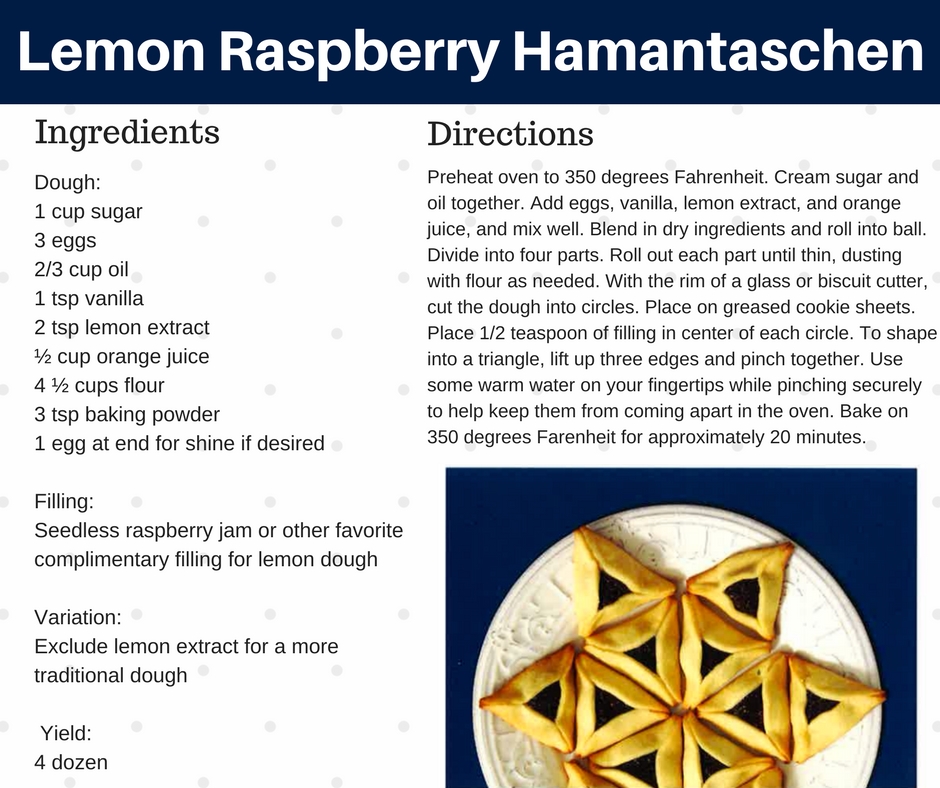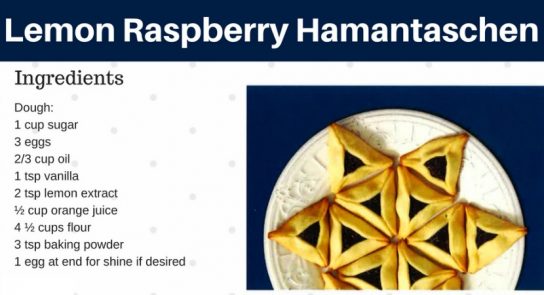How did these classic treats become a quintessential part of Purim? The fact that their sides are folded may hold the secret clue. The Yiddish word for ‘weaken’ is ‘tash’, with ‘taschen’ meaning ‘pouch’ in German. Similarly, ‘haman’ sounds close to ‘mohn’, the German word for poppies, as well as the name of the main Persian villain in the Book of Esther, Haman. Thus a verbal association may have long ago occurred that allowed a pastry that was literally called a ‘poppy pouch’ to be associated with the phrase ‘Haman weakens’.
This, of course, is only one theory as to how Hamantaschen became an iconic Purim treat. Legend also says that eating this three sided pastry was meant as a way to symbolically destroy the memory of Haman, as Haman wore a three-cornered hat.
To get in the spirit of Purim, Charles E. Smith Life Communities would like to share this Hamantaschen cookie recipe for you to try!


